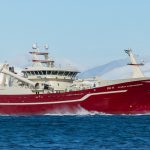As per the statement issued by the regulators the stocks of the two key species are in better shape than previously believed. They informed that under new fishing regulations, fishermen must stop fishing once the quota on one of the species is caught. The daily skate catch limit was originally reduced from 10,000 pounds to 1,900. But that assessment was based on data that was 3 years old.
Like skate, the best scientific information on pollock was relatively poor, resulting in a small annual quota. Since pollock swim with cod and haddock and seemed relatively plentiful, fishermen felt they wouldn’t be able to avoid catching them. Fisheries service spokesman Marjorie Mooney-Seus said that limited data on pollock from three years ago has been replaced by a new, more precise — and robust — assessment. Preliminary results revealed at yesterday’s New England Fishery Management Council Groundfish Oversight Committee meeting in Mansfield showed that stocks can support a catch roughly five times greater than originally estimated.
Regulators promised to expedite the new assessments. Ordinarily, new data would be incorporated in the following fishing year. NMFS Northeast Regional Administrator Patricia Kurkul said that a commitment has been made to the fishing industry to be as flexible as possible when new science is made available that affects management decisions.








